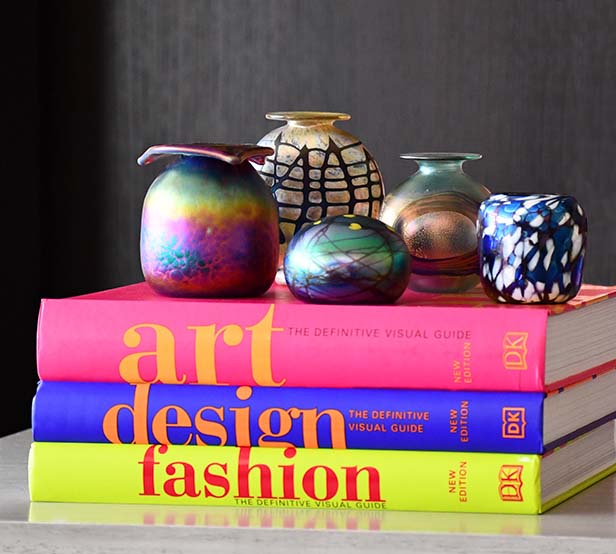
An Introduction to Mediumalism (and How Maximalists Led Me to It)
By: Kayla Blanton
There’s a name for design that falls somewhere between the scarcity of minimalists and the curated hoards of maximalists. It’s not super technical—and if I’m being honest, I can’t claim credit for it—but it’s truly the perfect descriptor: Come one, come all, fellow mediumalists.
So, What Is Mediumalism?
The term is floating around design corners of the internet as a way to describe those who appreciate aspects of minimalism and maximalism, and moreover, feel a flutter in their hearts when a perfect ratio of bits to bobs exists within a home. And as soon as I read it, I identified with it deeply. Here’s why.
I used to think I was a maximalist. I certainly wasn’t a minimalist (says my abstract gallery walls and vintage hand sculpture collection), and I felt drawn to maximalist interiors on Instagram—particularly those under the hashtag #authenticmaximalistinteriors. (Check it out if you haven’t, it’s captivating.)
But then I learned the difference between admiring and adopting; between purposeful collecting and aimless purchasing.
How Do You Know If You're A Mediumalist?
That’s not to say all maximalists flippantly shop for their homes, but at one time, I did. And in my young efforts to join the club, I couldn’t care less about my connection with an object before chucking it onto the checkout counter. Why? Because I was a maximalist now. No further questions, please.
That mentality created a problem, fast—not only for my bank account, but for my relationship with design. Here’s the thing: I love beautiful objects, and discovering one that perfectly suits my style and needs (especially when it’s buried under a pile of thrift store junk) is like a drug to me. But it quickly became clear that I was trying to imprint onto as many things as possible just to build a certain aesthetic.
That’s when I realized a connection—that warm and fuzzy feeling you get when a piece sings to your creative and spiritual soul—can’t be manufactured. It’s also when I learned that the editing process of a home is something I enjoy just as much as adding to one. Knowing each room is full of only things I love and that are functional brings me immense joy. But I don’t put a cap on what can join the family—if it finds me and feeds me, it’s welcome.
At its core, mediumalism is about balance—a pillar of design, and of life. Yeah, it’s that deep. And if you too, feel lost on the spectrum between few things and lots of them, I’ll extend to you the three questions I ask myself when I have a cart full of trinkets and a brain full of indecision:
-
Does this piece elicit emotion? Does it remind me of a person, memory, or place that I love?
-
Do I have something similar already? (And therefore, do I really need it?)
-
If I go home without this item, will I still think about it?
For me to take the plunge, the ideal answer trifecta is, “Yes. No. Yes.” Of course, exceptions happen. But more often than not, what I buy or acquire now feels right. And when I scroll maximalist Instagram with hearts in my eyes, I’m content knowing I’m a mediumalist at heart.
By Kayla Blanton: Jewel tones, brass, and amber glass make Kayla Blanton swoon. Those touches, plus lots of art, animal print, and road-trip gathered trinkets make up her 1920s Cape Cod in Cincinnati. You can read her work in Bustle, Prevention, Everyday Health, and more and follow her treasure hunting adventures @theweekendantiquer on Instagram.





